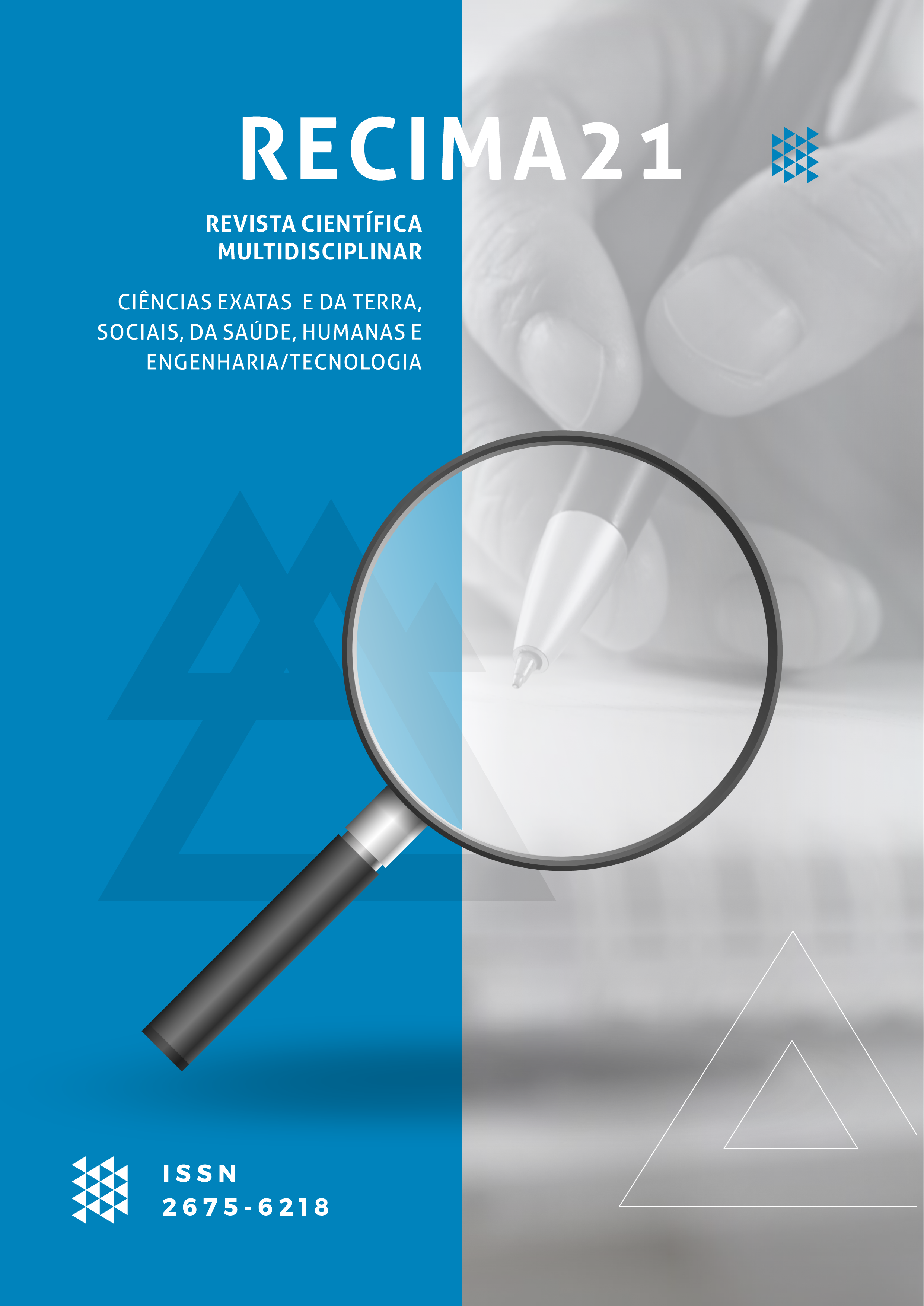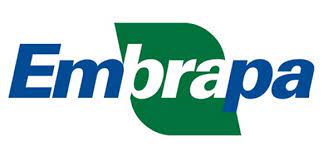DEVELOPMENT OF EDUCATIONAL TECHNOLOGIES FOR NEUROPATHIC DIABETIC FOOT MANAGEMENT
DOI:
https://doi.org/10.47820/recima21.v3i7.1706Keywords:
Diabetes Mellitus. Diabetic neuropathy. Technology.Abstract
Among the severe microvascular complications of Diabetes, one can highlight the foot at neuropathic risk that causes loss of sensitivity, deformities and superficial traumas that can lead to infections, ulcers and/or destruction of deep tissues. The objective of this study was to analyze the scientific evidence of the development of educational technologies for the management of neuropathic diabetic foot. This is an integrative review, carried out from May to July 2021, through search in the databases: MEDLINE, LILACS, WOS and SCiELO. Evidence published between 2016 and July 2021 were adopted as inclusion criteria, whose objective was the application of educational technologies aimed at neuropathic diabetic foot. The sample totaled 75 articles, after finishing all stages of the analysis process, 8 articles were included in this review. The result was presented through a table containing the main characteristics of the eligible articles. It was possible to identify, among the educational strategies developed, the presence of the serial album, virtual object of learning, manual, application, technology with mixed methodology and AVA. Through this study, this study reinforces the relevance of this theme and the growing interest among health scholars about the management of health care and reduction of complications resulting from Diabetes Mellitus.
Downloads
References
Sociedade Brasileira de Diabetes (SBD). Diretrizes da Sociedade Brasileira de Diabetes 2019-2020. São Paulo: Clannad; 2020.
International Working Group on the Diabetic Foot (IWGDF). Guidance on the prevention of foot ulcers in atrisk patients with diabetes. International Working Group on the Diabetic Foot; 2019.
Boell JEW, Ribeiro RM, Silva DMGV. Fatores de risco para o desencadeamento do pé diabético. Rev. Eletr. Enf. [Internet] 2014; 16 (2): 386-93.
Bus SA, Van NJJ, Lavery LA, Monteiro-Soares M, Rasmussen A, Jubiz Y, Price PE. IWGDF guidance on the prevention of foot ulcers in at-risk patients with diabetes. Diabetes Metabol Res Rev [Internet] 2016; 32 (Suppl 1): 16-24.
Amaral JAH, Amaral LAH, Bastos MG, Nascimento LC, Alves MJM, Andrade MAP. Prevenção de lesões de membros inferiores e redução da morbidade em pacientes diabéticos. Rev Bras Ortop [Internet] 2014; 49 (5): 482-87.
Cho NH, Shaw JE, Karuranga S, Huang Y, Fernandes JDR, Ohlrogge AW, Malanda B. IDF diabetes atlas: global estimates of diabetes prevalence for 2017 and projections for 2045. Diabetes Res Clin Pract 2018; 138: 271-81.
Moreira JB, Muro ES, Monteiro LA, Iunes DH, Assis BB, Chaves ECL. The effect of operative groups on diabetic foot self-care education: a randomized clinical trial. Rev. Esc. Enferm 2020; 54: e03624.
Borba AK, Arruda IK, Marques AP, Leal MC, Diniz AS. Knowledge and attitude about diabetes self-care of older adults in primary health care. Ciênc Saúde Coletiva 2019; 24 (1): 125-36.
NIETSCHE EA. Tecnologia emancipatória: possibilidade para a práxis de enfermagem. Ijuí: Unijuí; 2000.
Brasil GB, Rodrigues ILA, Nogueira LMV, Palmeira IP. Educational technology for people living with HIV: validation study. Rev Bras Enferm 2018; 71 (Suppl 4): 1657-62.
Santos WP. Abordagens metodológicas utilizadas em intervenções educativas voltadas a indivíduos com diabetes mellitus. Enferm Actual 2020; 38: 260-71.
Mariano AM, Santos MR. Revisão da literatura: apresentação de uma abordagem integradora. In: AEDEM International Conference 2017; 427-442.
Quilici MTV, Sá DFF, Vieira AEF, Toledo MI. Risk Factors for foot amputation in patients hospitalized for diabetic foot infection. J Diabetes Res 2016.
Gomides DS, Villas-Boas LC, Coelho AC, Pace AE. Autocuidado das pessoas com diabetes mellitus que possuem complicações em membros inferiores. Acta Paul Enferm [Internet] 2013; 26 (3): 289-93.
Almeida CAPL, Sousa KHJF, Oliveira JL, Lima LS, Santos TS, Amorim FCM, Carvalho CMS, Oliveira ADS, Carvalho HEF, Sousa BSA. Avaliação de ambiente virtual de aprendizagem. Escola Anna Nery 2019; 23 (4).
Arruda C, Boell JEW, Da Silva DMGV, Lopes SGR, Lauterte P, Junkes C. Tecnologia educativa para cuidados e prevenção do pé diabético. Cienc Cuid Saude 2021; 20: e50115.
Chaves MAA, Santos RF, Moura LKB, Lago EC, Sousa KHJF, Almeida CAPL. Elaboração e validação de um álbum seriado para prevenção do pé diabético. Revista Cuidarte 2021; 12 (1): e1233.
Souza IC, Costa JS, Alencar MMSC, Monteiro PGA, Aquino PS, Castro RCMB. Construction and evaluation of a serial album for the prevention of foot complications in diabetics. Rev Rene 2021; 22: e61427.
Galdino YLS, Moreira TMM, Marques ADB, Silva FAA. Validation of a booklet on self-care with the diabetic foot. Rev Bras Enferm [Internet] 2019; 72 (2): 780-7.
Marques ADB, Moreira TMM, Carvalho REFL, Chaves EMC, Oliveira SKP, Felipe GF, Silveira JAN. PEDCARE: validation of a mobile application on diabetic foot self-care. Rev Bras Enferm 2021; 74 (Suppl 5): e20200856.
Padilha AP, Rosa LM, Schoeller SD, Junkes C, Mendez CB, Martins MMFPS. Manual de cuidados às pessoas com diabetes e pé diabético: construção por scoping study. Texto Contexto Enferm 2017; 26 (4): e2190017.
Santiago MAMT, Tarcia RML, Frederico GA, Vitorino LM, Parisi MCR, Gamba MA. Digital educational technology for care management of diabetes mellitus people’s feet. Rev Bras Enferm 2021; 74 (Suppl 5): e20190725.
Albuquerque AFLL, Pinheiro AKB, Linhares FMP, Guedes TG. Technology for self-care for ostomized women’s sexual and reproductive health. Rev Bras Enferm [Internet] 2016; 69 (6): 1099-106.
Aquino JA, Baldoni AO, Oliveira CL, Figueiredo RC, Cardoso CS, Pereira ML, Sanches-Giraud, C. Educational booklet on diabetes construction and content validation. Ciênc Biol Saude [Internet] 2016; 37 (1): 77-82.
Scain SF, Franzen E, Hirakata VN. Effects of nursing care on patients in an educational program for prevention of diabetic foot. Rev Gaúcha Enferm 2018; 39: e20170230.
Fratucci MVB, Araújo ME, Zilbovicius C, Frias AC. Distance Education as a strategy for permanent education in the Health field: training impact on the family health strategy team in the services organization. Rev Bras Aprend Ab Dist 2016; 15: 61-80.
Alves VLS, Okagawa FS, Parra JFG, Bohomol E, Cunha ICKO. Virtual interactivity: web forum café in a nursing management course. REME Rev Min Enferm [Internet] 2015; 19 (1): 134-40.
Filatro A. Design instrucional contextualizado: educação e tecnologia. São Paulo: SENAC, 2019.
Milne-Ives M, Lam C, Cock C, Van VMH, Meinert E. Mobile apps for health behavior change in physical activity, diet, drug and alcohol use, and mental health: systematic review. JMIR Mhealth Uhealth 2020; 18 (3): 1-16.
Goyal S, Morita P, Lewis GF, Yu C, Seto E, Cafazzo JA. The Systematic design of a behavioural mobile health application for the selfmanagement of type 2 diabetes. Can J Diabetes [Internet] 2016; 40: 95–104.
Baba M, Duff J, Foley L, Davis WA, Davis TME. A comparison of two methods of foot health education: The Fremantle Diabetes Study Phase II. Prim. care diabetes 2015; 9 (2): 155–162.
Downloads
Published
How to Cite
Issue
Section
Categories
License
Copyright (c) 2022 RECIMA21 - Revista Científica Multidisciplinar - ISSN 2675-6218

This work is licensed under a Creative Commons Attribution 4.0 International License.
Os direitos autorais dos artigos/resenhas/TCCs publicados pertecem à revista RECIMA21, e seguem o padrão Creative Commons (CC BY 4.0), permitindo a cópia ou reprodução, desde que cite a fonte e respeite os direitos dos autores e contenham menção aos mesmos nos créditos. Toda e qualquer obra publicada na revista, seu conteúdo é de responsabilidade dos autores, cabendo a RECIMA21 apenas ser o veículo de divulgação, seguindo os padrões nacionais e internacionais de publicação.

 Clique para ver detalhes
Clique para ver detalhes 











